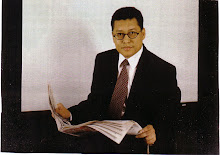Saturday October 31, 2009
Insight Down South
By SEAH CHIANG NEE
While the rich few rejoice, many Singaporeans are making do quietly.
YOUNG Singaporeans, who were raised in an era of affluence, have been indulging in a spending binge that appears out of line with economic realities.
The splurge, which followed signs of a mild recovery in recent weeks, resulted in a strong price run-up in stocks, properties and cars, taking many economists by surprise.
It was so strong that people were ironically fearful of an asset bubble building up during a weak economy. This apparent over-indulgence appears to ignore repeated warnings from government leaders and economists that more job cuts are in store and the recession could return.
One of its sovereign wealth funds, Temasek Holdings, said that as far as it was concerned, Singapore is still in crisis.
Despite these, expensive restaurants are once again packed with weekend diners and private clubs, once quiet, are again buzzing.
Most of the big spenders are young professionals, married and singles, and the wealthy. Their buying has caused prices of resale public flats and private condominiums to soar.
And despite the downturn, car usage in Singapore – one of the costliest in the world – has risen at the expense of public transport.
Analysts have, however, pointed out that the consumer splashing is unlikely to last and is only one aspect of life in a recession.
It is confined largely to the upper-middle class and irrationally exuberant professionals, who appear unfazed by the severity of it all.
Growing up in a golden era with years of news screaming about more good times ahead, many Singaporeans seem oblivious to their country’s vulnerability to world turmoil.
The bigger story is of a struggling middle class (some two-thirds of the population) that is too badly affected to be able to buy luxury items.
When I mentioned it to an old friend, a businessman and former human resource manager, he said the wider picture is different.
For the majority of workers, jobs have been lost and take-home pay diminished.
Almost all Singaporeans, rich and poor, have lost out in the recession, the worst being the poorer class.
“I admire these people very much. Mostly old and little skilled, they struggle on silently. No time to talk about their plight, just carry on working,” he said.
During the past two years, almost every Singaporean had to dip into his own savings to sustain himself, like the government did with its reserves in an effort to protect jobs.
The picture is different for the rich, whose number has been growing substantially through immigration.
The crisis has decimated fortunes, but the bulk of high-asset owners have enough financial muscle (again like the country itself) to ride out the storm or even prosper from it.
It is largely the spending habit of this group that fuelled the recent indulgence.
Years later, if writers looked back at the current severe downturn to ask what lasting impact the global crisis had on this society, one answer would be the erosion of the middle class.
The trend was first detected in Japan, and to a lesser extent in Hong Kong and Taiwan, as these middle-class societies prospered.
The theory, known as the M-shaped society, was enunciated by Japanese strategist Kenichi Ohmae. He observed that in Japan’s “M-shape” class distribution, very few middle-class people may climb up the ladder into the upper class, while the others gradually sank to the lower classes.
These people suffered a deterioration in living standards, faced the threat of unemployment, or their average salary was dropping, he said. Gradually, they could only live the way the lower classes lived: taking the bus instead of driving their own car, cutting their budget for meals instead of dining at better restaurants, and spending less on consumer goods.
Kenichi said all this might take place while the economy enjoyed remarkable growth and overall wages rose. However, the wealth increase may concentrate in the pockets of the very few rich people in society.
The masses cannot benefit from the growth, and their living standard goes into decline. For many middle-class Singaporeans, these sound uncomfortably like home.
The government, which relies on middle-class voters to keep itself in power, has vowed to make the closure of the economic gap a national priority.
It is a doubly tough job given the economic crisis which is widening – rather than narrowing – the differences. Minister Mentor Lee Kuan Yew seems to find this gap an inevitable feature here.
Singapore has the second-highest income gap with a Gini score of 42.5 among developed economies after Hong Kong, according to the UN Development Programme report,
(The Gini Coefficient index measures the income gap between the poor and the rich in any country with zero denoting absolute equality.)
Lee was speaking at a forum with undergraduates when he rejected a minimum wage for workers to narrow this gap, saying it was more important to keep jobs.
“Never mind your Gini coefficient,” he said. “If you don’t have a job you get zero against those with jobs.” In other words it is better to have a job with lower pay than no job.
Such remarks would obviously be more acceptable, albeit grudgingly, to the previous generation of poorer citizens than the current one.
It was such logic that helped turn Singapore into the richest country in South-east Asia, with a per capita GDP income rising steadily in four decades to S$53,192 (RM130,048) in 2008.
But in today’s high-cost city with Singaporeans finding it harder and harder to cope with the crisis, his words have neither helped nor dispelled many concerns.
Subscribe to:
Post Comments (Atom)

No comments:
Post a Comment